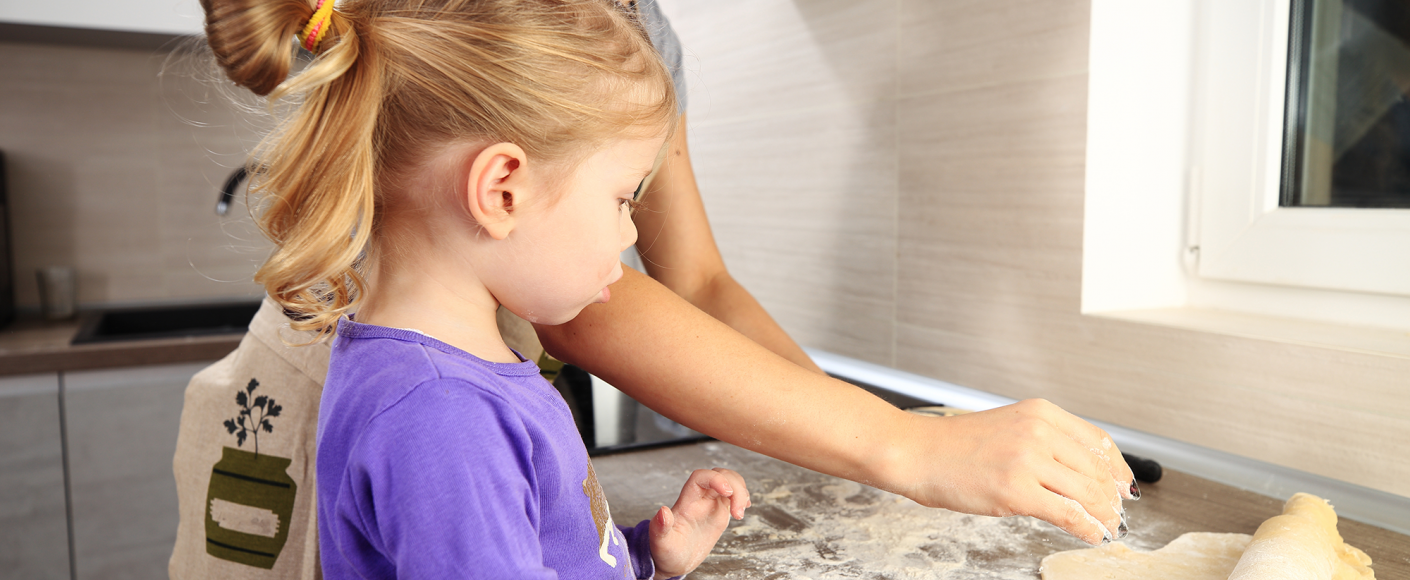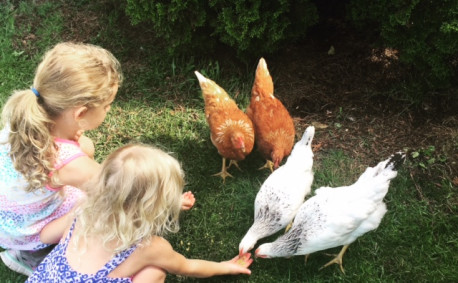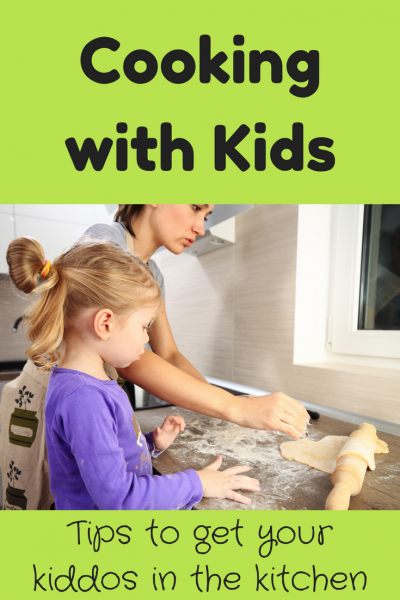Cooking with Kids
Getting kids in the kitchen has many benefits. Not only are children more likely to eat foods they help prepare, but involving them in the kitchen from a young age can also instill a love for cooking and help teach them fundamental life skills.
Age Appropriate Skills
As a mom of two young children, ages 6 and 3, I purposely try to include them in meal planning and preparation. Sure, it can take a little longer and be messier having “help” in the kitchen, but both my kids and I cherish the time we spend together in the kitchen! Some of my favorite memories growing up were sitting on the kitchen counter helping my mom in the kitchen and I hope my kids will say the same when they’re older.
Looking to get your kids in the kitchen but not sure where to start? Consider these tips!
Younger children can help in the kitchen by:
- Dumping ingredients
- Stirring
- Placing muffin liners in muffin tins
- Putting pizza toppings on top of the crust
- Sprinkling cheese
- Helping set the table
- Gathering ingredients
- Cleaning up
As children get older consider teaching them how to:
- Measure ingredients
- Crack eggs
- Cut using safe cutting techniques. You can introduce cutting by having children use a butter or plastic knife to cut softer foods.
- Safely put food in and take it out of the oven
- Cook on the stove
In preparation for this article I asked my girls what their favorite thing to make with me in the kitchen was. My three-year-old exclaimed that making banana muffins, specifically mashing the bananas and putting the muffin liners in the muffin tin, was her favorite. My six-year-old declared she likes cracking the eggs for Saturday morning pancakes! (I’d suggest having a couple extra eggs handy when you begin teaching your child how to crack eggs….I might be speaking from personal experience.)
Kitchen Time is More Than Just Yummy Food
Cooking can be a great time to practice math as well as talk with children about nutrition.
Have younger children help count ingredients. For example, ask children to count the number of cups as they dump them in. Talking about fractions while measuring can help older children visually understand how fractions work.
While I’m cooking with my girls I use the time to informally talk about nutrition such as what vegetables we are incorporating into the dish or what food groups are represented in our meal. As they get older I plan to talk about nutrition labels and why we buy certain foods over others!
Stay Safe
Children should be taught from a young age how to stay safe in the kitchen. My three-year-old doesn’t listen to everything I say, but she does always follow the rules when I’m taking things in and out of the oven because we have taught her to have a healthy fear of the oven.
Consider the following food safety and general safety tips when cooking with children:
Remind children to wash their hands before cooking and whenever their hands get dirty — especially when working with raw ingredients like eggs, meat and flour.
Tie back long hair. My girls know that to cook with me in the kitchen (especially if we are going to be sharing the finished product outside our family) that they have to put their hair in a ponytail to avoid getting hair in the food.
Visit with children about the dangers in the kitchen (oven, stove, knives) from a young age. Explain the dangers and why they need to be careful.
Help children understand that there are tasks in the kitchen that they get to do and then there are adult tasks in order to keep them safe!
Remember messes make memories! The more your children are included in the kitchen the better they will get at accomplishing certain tasks. Stay positive and have fun!!



